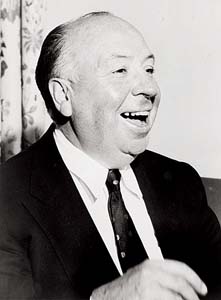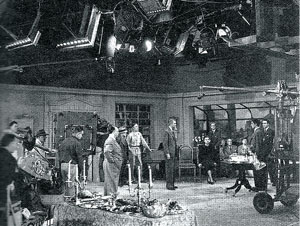How do I see the role of Construction Manager?
The Production Designer has to conceptualise the viewpoint of the script and the Director – and the CM’s job is turning that concept into reality, dealing with the technical, the financial and the scheduling sides.
I’m fortunate to have been brought up in a family with a strong design connection. I was lucky to have been able to crawl around as a youngster behind film sets while my Dad, an Art Director, was working. My first time working on a film set was when I did work experience on ‘Aliens’ with my Father and Peter Lamont in the Art Department. Although I enjoyed this, the element I was most interested in was Set Construction
I left school in 1986 and started an apprenticeship in carpentry & joinery. The company I worked for did mainly television scenery but also some exhibition and theme park work. I left the company after 5 years as a qualified carpenter/joiner and decided to ‘try my luck’ in the film industry as a freelancer, starting with ‘First Knight’ working for Construction Manager Tony Graysmark as a shop carpenter. This suited me very well because I preferred ‘setting out’ and the actual fabrication of the scenery. I worked for Tony again on ‘Goldeneye’ in 1995, then worked on a number of films after this including ‘Fifth Element’ with Ray Barret ‘The Borrowers’, ‘The Avengers’ and ‘Notting Hill’ with Michael Redding and ‘Love & War’ with Terry Apsey.

The cast of ‘Band of Brothers’ in front of the hangar as seen by the television audience.
It’s all an illusion!
I was fortunate enough to be supervised by two great Construction Managers – Terry Apsey on ‘Sleepy Hollow’ and ‘Band of Brothers’ and Michael Reading on ‘Quills’ and ‘Tomb Raider II’. I was very lucky with both Terry and Michael, as they were very lenient on my slightly rebellious approach to what I did and how I worked.

The fabulous set of the Paris Opera House for ‘Phantom of the Opera’ – 2004. This was built as a fully-operational theatre capable of holding a substantial audience in the auditorium, an orchestra and a full cast of artistes on stage. The construction used two adjoining stages at Pinewood Studios so that the action from the theatre stage could follow right through the authentic backstage area built on two floors, complete with dressing rooms, costume department, to the stage-door exit complete with stables.
I started on ‘Phantom of the Opera’ as a Supervisor but was cajoled by Terry Apsey to try my hand at running Carpentry as Head of Department – this is when I started to be exposed to the financial and scheduling side of construction – an area I found that I really enjoyed.
After ‘Phantom’ I ran a television show as Construction Manager, which was great for cutting my teeth. I had a few leads as CM after this but unfortunately all of them
– which, at that time, was a pretty regular occurrence. I had the horrible experience of working on a film that folded owing me wages – something that most film workers have experienced during their career. Around this time I decided to emigrate to Australia with my wife and children – but before leaving I enjoyed working on my last film with Michael Redding as his Head of Department.
When I arrived in Australia I had made my mind up not to be involved in films any more because the work was so fragmented, so I was really fortunate to land a job with a joinery company as their Operations Manager.
Then, out of the blue, I had a phone call from the production office of ‘The Pacific’ – asking if I would be interested in the role of Construction Manager. Luckily, the production had asked Terry Apsey of my whereabouts and he managed to track down my number. Although I had promised myself not to drop back into the industry, the complexity of ‘The Pacific’ appealed to me.
We filmed in the far North of Queensland, the You Yangs Regional Park near Melbourne, around the city of Melbourne itself and in Melbourne Central City Studios. In total there were 105 different sets and we were turning over 2 sets a day to the 2 main units. Some of the sets were worth $50k and a couple were worth $6m each! The overall construction budget was $24m out of an Art Department budget of $50m.
Because the job was so large it had 2 Supervising Art Directors – Dominic Hyman & Richard Hobbs. There’s quite a difference in work practice between Australia and the UK – in Australia the Construction Manager usually doesn’t have financial control but luckily ‘Pacific’ used the UK system where the CM had full financial control of the construction budget.
For me, one of the best things that came out of the ‘Pacific’ project was the fact that, because I needed a crew of 450 and the local crew base wasn’t large enough to facilitate this, we undertook a training scheme – specifically in fibrous work. A lot of the sets were very different to normal film construction and involved some fairly innovative approaches, mainly utilizing civil engineering and geo textiles. Also in Australia, the sculpting department is normally as big as the carpentry department because they don’t usually use fibrous plastering – they mainly sculpt in concrete, which is a very, very cost-effective method.
After ‘Pacific’ I returned to the company I started with when first arriving from the UK, where I moved up to the position of General Manager. Although scenery was not in my company’s portfolio, I very quickly added a ‘special projects’ division to the business and have been lucky to have involved the company in theme park, exhibition and film.
The CM’s first responsibility is to the Designer – and I often see this as a protective responsibility as far as the budget goes, in dealing with the Producers – and also a responsibility to the Designer in allowing enough time for a design to be constructed properly. Because, as I mentioned, I have grown up in a ‘design’ environment, when I see the blueprints I can visualize the construction methods required and see it in a 3-dimensional image – which makes it very easy to budget and schedule the job.
When you work with a good Production Designer like Tony Pratt, it’s easy to understand what you need to produce. Peter Lamont was very much the same, an Art Director of the old school like my Dad and Jim Morahan – and I’m very lucky, having worked in television, exhibitions and theme parks, as well as films, so now I can bring all of those methods together.
From my point of view, the ‘old school’ design, the ‘pencil’ design, is the easiest to interpret because, with a pencil you can actually ‘feel’ the type of set you need to do. With CAD drawing there is no emotion involved. If I look at a drawing by Jim Morahan or Tony Pratt, or my Dad, I know exactly what I need to do – but if I look at a CAD drawing I have to start talking to people to find out exactly what the set is supposed to look like – the feel, the texture, the finishes.
There’s a guy in Australia called Mike Molloy – he’s not in films but I’ve worked with him in commercial construction work in night clubs, shops etc. I use him because he draws in pencil first. I think now that you can actually get CAD which doesn’t use a ‘straight line’ format so it begins to look like an actual drawing – but all the designers on ‘Pacific’, with one exception, were pencil Draughtsmen – and the only set we had major problems with was drawn on CAD! It was the only one that the Scenic Artists and the Plasterers couldn’t quite get the feel of what exactly the Art Director was after.
Tony Pratt is very conceptual – very epic in his designs – and I was asked to produce two sets of 90,000sq m in 20 weeks alongside 80 other sets. I know that he worried a great deal for 3 months whilst we were conceptualizing and, in the end, I had to remind him that I was the Construction Manager, so it was my responsibility and not his so that he could stop worrying so much! It was such a pleasure working with him.
I have to say, never have I seen crews who want to please the Designer more than the Australians – if the Designer gains their respect, they will do absolutely anything to produce the best sets possible.
The big difference between Australian and English crews is mainly in construction techniques. Just as you would find a difference working in Prague – but the results are the same, although the differences are reducing as more and more British guys are emigrating – and both crews learn a lot from each other.
I have found that the Australian approach can be very interesting, for example, Chris McMahon is one of the best sculptors I’ve ever worked with. Sculpting here is completely different, they can do very fine work – they did all the work for ‘Narnia’ & ‘Pirates of the Caribbean’ but the most amazing thing is that their sculpture is in concrete – and they’ve devised a method which Disney now uses in the theme parks – they’re extremely talented guys and are more construction based than art based.
The Scenic Department is very different to the UK. The Paint Department is run by the Scenic Artist who is quite often also the Scenic Finisher. Which sometimes doesn’t work very well! To get the best results I think that you need to specialize – Scenic Artists to do backings with the Scenic Paint Department finishing surfaces.
The most important thing is that the Designer gains the respect of the Construction Crew and therefore will get the best work. In a film every person had their own input, whether it’s a Stagehand sweeping or the Producer who raises the money, all have to work as a team to bring the project together – but I wish that, when awards and praise are handed out that the highly trained and creative Construction Crews – Carpenters, Sculptors, Painters – would get more recognition. After all, it is they who bring the Art Department and the Director’s ideas to life!
Dominic Ackland-Snow’s film credits include: The Invisible Woman – 2013, Sanctum – 2010, The Magic Flute – 2006, Phantom of the Opera – 2004, Tomb Raider II – 2003, Quills – 2000, Sleepy Hollow – 1999, Notting Hill – 1999, Fifth Element – 1997, The Borrowers – 1997, In Love & War – 1996, Goldeneye – 1995.
Television credits: Parade’s End – 2012, Pacific – 2010, Planet Cook – 2004, Band of Brothers – 2001.























